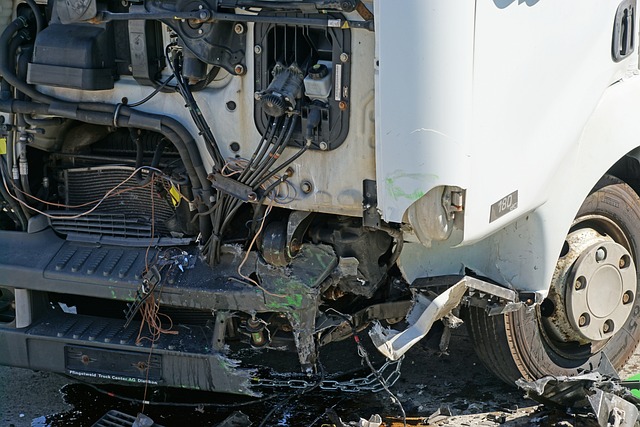Comprehensive Business Liability Insurance is a crucial safety net for businesses, protecting them from various legal liabilities and potential financial losses. It covers general, product, and professional liability, shielding against risks like slips and falls, defective products, and negligence. By absorbing medical expenses, legal fees, and damages, this insurance enables businesses to maintain stability and focus on growth without financial worry. Liability insurance is vital for risk management, covering property damage, personal injury, and specific professions. Business owners should assess their activities, compare policies, and consult specialists to select suitable coverage tailored to their needs. Real-world case studies highlight its value in navigating legal battles and safeguarding business operations.
“Liability insurance is a cornerstone of risk management for any business, offering crucial protection against potential losses. In this comprehensive guide, we demystify Comprehensive Business Liability Insurance, breaking down its key coverage areas, including property damage and personal injury. We explore the role of this insurance in mitigating risks, differentiate between general and professional policies, and provide actionable tips on choosing the right coverage. Additionally, real-world case studies illustrate the profound impact of liability issues on businesses, underscoring the importance of proactive risk management.”
Understanding Comprehensive Business Liability Insurance: A Primer

Comprehensive Business Liability Insurance is a crucial safety net for businesses, safeguarding them against potential legal liabilities and financial losses. It offers protection against claims made by third parties, such as customers, employees, or visitors, who may suffer injuries or property damage on your premises. This type of insurance covers medical expenses, legal fees, and damages awarded in lawsuits, providing a financial shield to help businesses weather unexpected legal challenges.
The key aspect of Comprehensive Business Liability Insurance is its broad coverage. It typically includes general liability, which protects against common risks like slips and falls, product liability for defective goods or services, and professional liability for negligence in business practices. This insurance ensures that your business remains stable, even if faced with unexpected legal issues, allowing you to focus on growth and operations without the constant worry of potential financial burdens.
Key Coverage Areas: Property Damage and Personal Injury

Liability insurance forms a crucial component of any comprehensive business strategy, protecting against potential financial losses from property damage and personal injury claims. When it comes to key coverage areas, these two aspects are paramount. Property damage liability covers claims arising from physical harm to premises or possessions, whether caused by accidents, natural disasters, or the actions of others. This includes repairs, replacements, and legal fees associated with such incidents.
Personal injury liability, on the other hand, protects against legal responsibilities for injuries or illnesses suffered by individuals on your business premises or as a result of your products or services. This coverage extends to medical expenses, lost wages, pain and suffering, and other damages awarded in personal injury lawsuits. Ensuring adequate property damage and personal injury protection is essential for any business aiming to mitigate risks and safeguard its financial health.
The Role of Liability Insurance in Risk Management

Liability insurance plays a pivotal role in any comprehensive risk management strategy for businesses. It acts as a shield, protecting against potential financial losses arising from legal claims and lawsuits. In today’s complex business landscape, where risks are multifaceted and ever-evolving, liability insurance is not just an option but an indispensable tool. This type of insurance covers various liabilities, from product defects to professional negligence, ensuring that businesses can navigate legal complexities with confidence.
By purchasing liability insurance, companies demonstrate their commitment to managing risks effectively. It enables them to transfer potential financial burdens associated with lawsuits to insurance providers, who are then responsible for covering the costs of settlements or judgments against the business. This risk transfer mechanism allows businesses to focus on growth and innovation rather than constantly worrying about potential liabilities. Moreover, liability insurance helps maintain a positive public image by showing that a company takes its legal responsibilities seriously.
Different Types of Liability Policies: General vs. Professional

Liability insurance is a crucial component of any business’s risk management strategy, offering protection against potential financial losses due to claims of negligence or harm. When it comes to liability policies, two common types stand out: General and Professional. The former provides broad coverage for various risks a business may encounter on a day-to-day basis, including property damage, personal injury, and advertising injuries. It’s designed to protect against everyday risks that can arise from general operations. On the other hand, Professional liability insurance is tailored to specific professions, such as legal services, healthcare, or consulting. This specialized policy focuses on protecting businesses from claims related to professional negligence, errors, or omissions in their services.
Understanding these distinctions is essential for business owners when selecting an appropriate liability insurance policy. General liability covers general operations and potential risks associated with them, while Professional liability caters to more niche areas, ensuring that professionals are protected against claims arising from their specialized services.
How to Choose the Right Liability Coverage for Your Business

Selecting the appropriate liability coverage is a critical step in protecting your business from potential risks and financial losses. The first step is to assess your business activities and identify potential hazards. Consider the nature of your operations, the products or services offered, and any unique risks specific to your industry. For instance, a construction company might require higher liability insurance due to workplace accidents and property damage.
Once you’ve identified these factors, compare different liability insurance policies and their coverage limits. Ensure that the policy covers general liabilities, professional responsibilities, and any other applicable risks. Understand the exclusions and deductibles as well, as these will impact your overall protection. It’s beneficial to seek advice from insurance specialists or brokers who can guide you in choosing a policy that aligns with your business needs, offering comprehensive protection at a reasonable cost.
Case Studies: Real-World Scenarios and Their Impact on Businesses

Liability insurance plays a pivotal role in safeguarding businesses against unforeseen events and legal repercussions. To drive home its significance, let’s explore real-world scenarios that highlight its impact. Case studies offer tangible examples of how liability coverage has protected businesses from significant financial losses and reputational damage.
For instance, consider a retail store facing a product liability suit after a defective item causes harm to a customer. With comprehensive liability insurance in place, the company is able to cover legal fees, settlement costs, and any damages awarded, ensuring business continuity. Similarly, a restaurant might face a lawsuit over food poisoning incidents. Adequate insurance mitigates this risk by providing financial protection during the legal process, allowing the business to maintain operations and focus on serving its customers.
